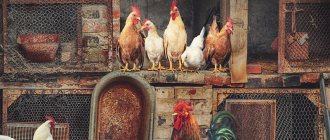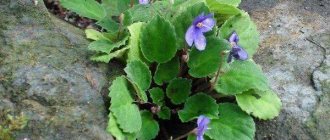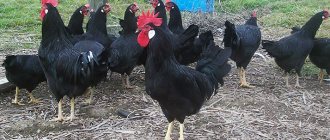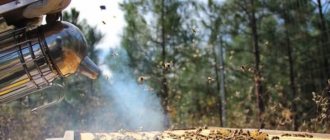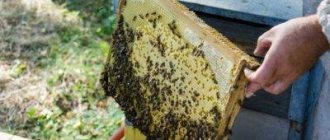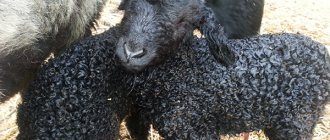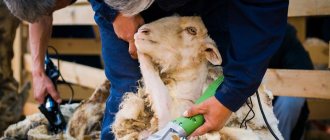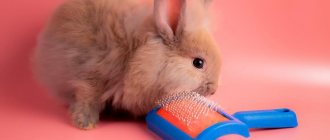There are hobbies that, in addition to pleasure, can generate income. These include bee breeding, which does not require large financial expenses, labor and time.
However, in fact, without knowing the basic conditions for growing these hardworking insects, nothing will work. To organize your own apiary, you need to get acquainted with the principles of their behavior, the rules of breeding and care, and the procedure for carrying out work. To make a profit in the future, you will still have to invest serious funds in organizing the business: you will need special equipment to provide the bees with comfort.
Beekeeping for Beginners: Step-by-Step Recommendations
What you need to do first, even before you start raising bees and caring for them:
- Make sure that you and your family members are not allergic to bee venom, otherwise the hobby could end badly.
- Decide which bee products you want to receive first: honey, beeswax, royal jelly, pollen, bee bread or propolis. You might be interested in apitherapy (bee sting treatment). Or you just want to start an apiary for your soul. If you plan to gain commercial benefits, then focus on obtaining one product in order to quickly get tangible results.
- Read the law on beekeeping to know at what distance from neighboring plots hives can be placed, what size fence is needed, and in what sanitary conditions the apiary should be kept.
- Get documents for the apiary - a veterinary passport and an apiary register. Then no one will find fault with you. Make friends with your neighbors so they don't kill your bees. These same neighbors will then become your first clients. And if your products are of high quality, then advertising agents will do so. Word of mouth has not been canceled.
- Pull out all hogweeds, belladonnas and other poisonous plants on your site, or even better within a 3 km radius, so as not to poison the bees and not get poisonous honey.
- Start with 1-5 hives.
- To learn how to care for bees, consult everyone you can. Watch the video. Read books - fiction and textbooks. Listen to different points of view, look for scientific information - it is the most accurate and reliable.
Clarification : you cannot obtain documents for the apiary without the apiary itself. This point will be relevant (and mandatory!) when you already have an apiary.
Keeping bees is a year-round activity. Even in winter they need supervision. How your charges will spend the winter - in the wild under the snow or in an omshanik - is worth thinking about in advance. Every week, go and listen to the hives to see if the minke whales are worried or cold. Noticing and correcting a mistake in time = saving the bee colony from death. Do not open the hive without a reason - this irritates the insects and disrupts the microclimate.
Which hives to start with?
What is it, the best hive for a novice beekeeper?
- Are they different?
- Yes, I have.
It is unlikely that you will be able to read all the names, but you can see for yourself that there are a lot of varieties of hives. Recumbent, standing and all sorts of different ones. How to choose the best and most suitable? Here not only a novice beekeeper, but also an experienced professional will think about it.
There are hives-beds - long, horizontal, and there are multi-hull hives with vertical extensions. How to choose the best?
How the hives look from the outside is no less important than their correct design.
The answer is simple - how is it more convenient to care for it, which hives will be more convenient for you, as a novice beekeeper, to set up for the winter or transport in the case of nomadic beekeeping. Each type has its own pros and cons; there is no ideal one.
But all types of hives have one thing in common - it doesn’t matter whether they are wooden or plastic, but it is better to paint them. And in different colors.
Tips for Beginners : Paint the front walls of your hives different colors. Firstly, paint is an additional protection for the hive from moisture, and secondly, insects distinguish between colors. This will make it easier for them to return to their own home rather than fly into someone else’s. This action will protect against the theft of honey and the loss of flight personnel (at best, strangers will be driven away, at worst, they will be killed). The interior of the hive must not be painted!
On average, 10-12 frames are placed in a hive. Make 3-5 more in reserve - change frames with honey for empty ones, repair, re-tighten, but you never know what else can happen. Don’t be smart in the first years - take standard size frames. Then, in case of any emergency, the nearest beekeeper will help you out.
If this is your first season, then start with the simplest single-frame hives. For novice beekeepers, it is first of all important to understand how to properly care for insects, at what point to take what actions, and so on. You will collect huge harvests of honey when you understand how the bee family lives and how you can help them in difficult times (I’m talking about wintering and disease prevention). Otherwise, there is a chance to invest good money in setting up an apiary, but without knowledge of theory and, most importantly, practical skills, in the spring you will discover that there is no one alive in the hives... It is very disappointing to lose money and time.
From the second or third season, you can switch to more complex models of multi-hull hives, or increase the number of hives in the apiary. The work of caring for an apiary is already more or less familiar to you.
Preliminary points
If the decision to join the ranks of beekeepers is quite firm, and you take the matter seriously, it is important to take into account some details even before starting work on apiary arrangement:
Assessing your own readiness for beekeeping. This includes checking for the absence of health contraindications, assessing the moral-volitional attitude and level of patience. After all, work in an apiary is not just for one day, it is long and painstaking work.
Financial resource assessment
It is important to know how much money you have to set up an apiary. All expenses should be taken into account: for the purchase of bees and hives, for transportation, for special clothing and equipment, for seasonal maintenance and the upcoming wintering.
Time resource assessment
It is important to understand how much time a novice beekeeper can devote to an apiary. Because some seasonal work with bees cannot be delayed or postponed
At some points (honey collection, preparation for wintering) it is necessary to constantly be present in the apiary for several days.
Planning the location of the apiary. This is especially important, since if the apiary is located in populated areas or in gardening associations, it is worth obtaining the written consent of all immediate neighbors. This will avoid many unnecessary disputes and proceedings.
Studying the issue. This is an extremely important point, because it is worth going into beekeeping with at least the basics of training. You can replenish your knowledge by reading specialized literature, studying thematic forums and Internet resources. It will be very good if you have the opportunity to learn from experienced beekeepers in practice or at least communicate with them.
Expert opinion Dmitry Filipovich Smirnov Experienced beekeeper who knows everything about honey and the life of bees
When there are no problems in all these parameters, you can proceed to work.
Hive structure (briefly)
Three-part bee hive.
Even people far from beekeeping know that bees in an apiary live in hives, but not all novice beekeepers know the structure of a hive. This is not just a box with a crack flying in and out. The right hive is, although not very complex, but a well-thought-out design.
The hive must have:
- frames are placed strictly vertically! To make life easier for insects, place frames with foundation rather than empty ones. Then the bees will focus on collecting honey, and not on building combs
- an opening lid to examine our minke whales, adjust the number of frames, feed them, treat them, and help as needed;
- removable bottom to remove litter and control waste;
- at least one hole (entry) to leave the hive and return with honey.
What is foundation - these are thin flat sheets of wax, divided into numerous hexagonal cells - future honeycombs.
Of course, this is a very brief description of the design of the evidence. But these elements are present in all models of bee houses. A more detailed device, with all dimensions, drawings and materials, must be studied separately for each model. Here, for example, are the drawings and design of a multi-body hive Boa constrictor from Vladimir Davydov.
Technology for keeping bees in beds
This method of breeding insects is practical, rational and simple. Its advantages are:
- in ease of transportation;
- in the absence of a regular need for special lifting of the bodies;
- in the heat capacity of the design type;
- in the additional possibilities of sun loungers, breed a nucleus;
- in high egg production of queens;
- the ability to support a large number of strong families;
- in anticipation of anti-swarm measures (use of a special diaphragm to form layering).
How to Buy Bees for Beginners
Not the easiest question either. Often, novice beekeepers have no idea where and how to buy bees. They are not sold on the market, nor in pet stores. There is also no knowledge of how to identify a strong, good family.
This is what the finished bee package looks like.
What should I do? When is the best time to buy and how? I will try to fill this gap based on my knowledge.
It is best to buy in the spring, before the honey harvest season. You can buy it right away with the hive, from a local beekeeper, so that you have a breed that is accustomed to your climatic conditions. Don’t buy an expensive breed right away - first learn how to care for them, especially how to winter them.
You need to pick up a bee family before dawn or after sunset, since during the day most of the insects are at the honey collection, and at most 10% sit in the hive. They are unlikely to sell you the strongest family - you need such wealth yourself, but if you buy a family, then it must weigh at least 5 kg.
Tips for beginners : if you are transporting hives with bees yourself, close the entrance tightly, tie the lid and bottom so that they do not open along the way - they really don’t like shaking and will be very angry the whole way. You don’t need to release them right away in a new place - let them calm down first.
As a theoretical option, you can consider catching stray swarms. But here experienced beekeepers have a lot of questions, and beginners certainly have no chance, so this is just for show.
Specifics of insect breeding in multi-hull hives
Qualified specialists have long preferred to use such hives, which greatly facilitate their work. In addition, the technique makes it possible to expand families, raise young animals and overwinter field workers without significant damage. The owner will have to:
- apply all your knowledge and diligence;
- systematically regulate the way of life of insects;
- look after them depending on the season;
- move the frames in accordance with the honey harvest season and the activities of the bees.
The effectiveness of this type of bee colony breeding is determined by the arrangement and filling of the houses. The rhythmic functioning of the apiary is ensured by the presence of several sets of components that allow timely changing of frames, detaching hive parts and attaching superstructures to the boxes.
How does a bee family live?
You need to take care of bees at any time of the year. In the summer, they stock up on honey and pollen, grow, they need to be watered, treated for diseases, and make sure that there are always free frames for honey in the hive.
Tips for beginners : use jars of sour jam to catch wasps and hornets. Bees don't eat it, but other flying biters swoop in with gusto.
In the fall, insects prepare for wintering and “preserve” the last of their honey. Before wintering, you will need to shrink the nest, since the smaller it is, the easier it is to warm it. From the outside - insulate it or even bring it into the winter hut, from below - protect it from rodents, and also reduce the entrance and make sure that there is enough food left in the hive for the winter.
In winter, our minke whales do not sleep, but simply sit in the hive, warm it, eat honey and move around in the club (in a ball) - changing places so that the outer ones do not freeze. At least once a month, and preferably more often, you need to come and listen to whether everything is in order in the hive, and add food in time if there is not enough of it.
By the beginning of the honey harvest, the winter generation will be completely replaced by the young. At the same time, during the first spring inspection, you can treat the insects for diseases, feed them with vitamins or drugs for fertility, and also expand the nest again and put the hive in its summer place.
How to feed and why it is needed
More information for beginner beekeepers. Experienced people have their own recipes, proven over the years, tailored to a specific breed. Over time, they will appear for you too.
To properly breed and care for bees, you need to know what they eat, how and when to feed them, if necessary at all. The best food for them is honey. This is a carbohydrate, it gives them energy to work all day. To raise brood, you need protein - pollen (pollen, which they roll into balls and carry on their hind legs) and beebread (pollen embedded in honey). Another necessary element is water. It is needed for processing honey and for cooling the nest.
Greedy, inexperienced commercial beekeepers are ready to feed the bees sugar, taking every drop of honey, but on sugar the bees quickly wear out and do not breed (sugar is white, but there is no protein). According to the mind, sugar feeding - dough or syrup - is given only when the bees do not have enough natural food in winter and late autumn.
Tips for beginners : if you want to have someone to breed and care for next year, don’t take all the honey. Insects produce it primarily for themselves and digest it better than any substitutes.
Prevention of diseases in the apiary
Proper care and breeding of bees also implies treatment and prevention of diseases. Bee diseases can be contagious or non-contagious. The first ones are caused by viruses, bacteria or fungi. The latter occur due to improper handling: overheating or freezing of the nest, excessive dampness. Some diseases affect only the brood (that is, larvae and pupae), others affect the adults, and others spread to the entire hive.
A separate, large article about the treatment of bee brood diseases
Therapeutic and preventive measures are carried out before and after wintering, after the first spring flight and in the summer, if necessary, if the swarm begins to get sick frequently. Medicines come in tablets, solutions, medicinal strips, they can be added to food, sprayed or fumigated with bees.
Tips for Beginners : Almost all diseases can be avoided by keeping the hive clean and inspecting it regularly. A mesh at a height of 1-2 cm from the bottom helps a lot to prevent bees from crawling along the bottom in debris and fallen mites.
Beekeeping from scratch: how to save money when starting a business
When funds are insufficient, you can buy used hives or make your own. But if you are not yet well versed in beekeeping, it is worth consulting with people who have experience, especially when buying hives.
What should you consider when making your own hives? The “bee house” must be made of high-quality wood. Alder, fir, aspen, cedar, linden are suitable.
To make a hive, the wood must first be dried (humidity should not be more than 15 percent). Then the prepared hives are primed with drying oil and painted on the outside, which makes them more durable. Before these procedures, it is necessary to caulk all the cracks.
There is an alternative option that has long been used in Western countries - polystyrene foam hives. But their main drawback is their fragility.
If you decide to purchase used hives, there are a few details to pay attention to. The hive should have:
- flat roof covered with roofing felt or iron.
- roof vent;
- removable bottom (at least nailed with a landing board);
- nesting frames with magazine extensions in the body;
- main tray located at the bottom of the front wall;
- additional tray - in the upper part of the front wall;
- ceilings made of wood or canvas;
- devices for migration (ventilation meshes, clamps);
- feeder (nesting or over-frame design).
The size of the bee houses is also very important. For example distance
- between honeycombs of adjacent frames - 3.8 cm;
- between the walls of the hives and the side bars of the frames - 0.8 cm
The width of the streets between the frames is 1.2 cm.
When you purchase hives, make sure they are standard sizes. Otherwise, you will have to order the production of replacement parts, which will only increase your costs.
How to get and store honey
In 90% of cases, the main purpose of bee breeding is to produce honey. Whether it’s worth selling it or whether it’s better to eat it yourself is up to you to decide.
So, we have an apiary. The bees regularly fly out to work every day. Accordingly, we (more precisely, they still have honey) also have honey. How bees extract honey is a topic for a separate article. We should now be interested in the question - how can we get honey from the hive without harming our charges.
Tips for beginners : You should never take away all the honey.
We will get frames with honeycombs from the hive, and now we will get honey from the honeycombs. There are 2 most common ways:
- using a honey extractor;
- sell or consume honey directly from the combs.
A honey extractor reduces the usefulness of honey - when it comes into contact with air, it oxidizes and loses its healing properties. Ideal honey is in combs, with caps, and with beebread. Wax cleanses the intestines, zabrus is a natural antivirus and antiseptic, beebread is iron and vitamins.
I highly recommend reading the article about whether it is possible to eat honey directly from the honeycomb and what it is.
It is better to store honey reserves in a dark place (sunlight destroys all usefulness in 3 days), cool, in glass or clay. It is better to use dark glass. If you sew a cover, then you can put it on the table for guests at any time of the day.
About the breeding calendar
Beekeepers with extensive experience must:
- start a beekeeper's calendar;
- record the number of bred individuals, conditions and periods;
- fix deadlines;
- keep a pedigree of the larvae, which will give an idea about each of the bees.
In the timing, indicate exactly when the eggs were sown in the mother colony and the number of individuals hatched from them. The calendar itself is easy to make with your own hands.
- Cut a disk of arbitrary sizes from cardboard.
- Place months and numbers on it.
- Adhere cardboard to board for durability and convenience.
Calendar for hatching queen bees
An example of using a calendar . Let's say that on June 11, a frame with larvae was placed in a family. Set the number 4 to 11 and secure. Now you can see that on the 14th you need to cull and get rid of unnecessary materials.
Equipment needed by a beekeeper
Beekeeper's tools.
For starters, a set like this will suffice. Every profession has its own tools and devices. For a novice beekeeper, the following equipment is quite sufficient:
- Smoker - to pacify the bees. They think that a fire has started, they collect goblets full of honey (a three-day supply), become heavy and cannot bite (try eating a hearty meal and then bending over twice). The main thing is not to overdo it, otherwise they will lose hope of salvation and will sting with particular anger.
- Beekeeper's chisel - for cleaning propolis from the walls of the hive. A carpenter's chisel and a beekeeper's chisel are different tools.
- Red flashlight – for working in the dark. Bees do not perceive red light - they see it poorly, which means they will not be excited at night. By the way, you shouldn’t paint hives red either.
- Melissa is not an inventory, it is a magic herb. It can also be brewed into tea. Don't confuse it with mint. Bees perceive the smell of lemon balm as the smell of the queen, so they do not bite the one who smells of lemon balm. If you don't anger them beyond measure, of course.
- Sprinkler - to spray the bees with medicine or water with lemon balm when uniting families, to mix the smells and relieve unnecessary stress. A regular plastic bottle is suitable for treating bees.
- Feeders and drinkers . The drinking bowls should have a convenient descent for the bees so that they do not drown when they get wet (at the very least, throw thin sticks into the drinking bowl).
This is a minimal set of tools that will make it easier for even a beginner to breed and care for bees. When you understand which direction you want to develop and how to properly care for bee colonies, you can expand your range. A honey extractor, a wax melter, all sorts of machines for stretching frames, devices for grinding propolis before cleaning it, and 101 other different devices will be added.
For reference: it may happen that you don’t need the honey itself. For example, you decide to make money by pollinating fields (a common way to make money in nomadic beekeeping), extract and sell royal jelly, beeswax, or even decide to produce bee tinctures. These are all also branches of beekeeping.
What is needed to properly care for bees?
The beekeeper's task is to provide insects with conditions sufficient to create strong families. Caring for bees involves following a number of rules; it is also necessary to purchase beekeeping equipment:
- blanks for frames;
- wires for attaching foundation;
- sewed;
- honey extractor;
- bee remover;
- drone traps;
- dividing grid;
- drinking bowls and feeders;
- caps for uterus transplantation;
- roevni;
- cleaning brushes;
- portable box;
- chisels;
- smoker;
- protective clothing and face net.
It is also recommended to purchase a red flashlight for working in the dark and lemon balm to avoid bites. It is believed that individual bees do not see the red color and accordingly do not get irritated, and perceive the smell of the plant as the smell of the queen and stop stinging. In order not to cause aggression, the beekeeper should not make noise or emit strong odors.
Ideally, the purchase of bees is made in the spring; 2 boxes or 12-14 frames should be filled with insects. It is recommended for a beginner to purchase bees from local beekeepers, as the breed is adapted to the climate and will be easier to care for.
The bee colony must be transported in the evening or at night, since during the day the main part of the swarm is absent from the house. During transportation, the lid and bottom are tied so that they do not open on the way, and the tapholes are closed. The bees will become aggressive due to the shaking; nests should not be opened immediately. There should be no cracks in the hives, and the surface, regardless of the material, must be painted with oil paints in light, different shades, this serves as a guide for insects.
Beekeeper's inventory
Beekeeper's work clothes set
The bees won't be happy about your visit, but they won't be able to sting you either.
A beekeeper's suit is akin to a space suit. Everything is adjusted and buttoned. If insects get inside, you won’t think it’s enough.
It doesn’t matter whether you are a beginner beekeeper or have already been in this profession for 10 years, but you must have special clothing, since breeding and caring for bees is not a safe business. The suit must be:
- light and smooth, since over a couple of thousand years bees have developed a persistent dislike for hairy, dark-skinned animals: bears, martens, field mice;
- loose to be worn over other clothes;
- with a fine-mesh net on the face (mosquito net) and a wide-brimmed hat. It is better to further seal the hat or put it on a cap or hood so that the head is not bitten;
- fixed on the ankles and hands so that the bees do not get inside - they crawl very well. Wear gloves, thick fabric or rubber.
More convenient is a one-piece overall, with a zipper and with pockets or a belt for tools, but this is not critical. You can sew the costume yourself or buy a ready-made one. Finding it on AliExpress is not a problem.
You can do without a special suit. But this is clearly not for beginners, but for those who know exactly where to put their hands and where not. In moderation, bee stings are even beneficial. As long as it's not in your face.
Shoes are thick, it would be nice to have high tops (for example, ankle boots).
Tips for beginners : Bees are sensitive to smells. The pungent smells of perfume, alcohol, cigarettes, sweat, onions, garlic and the like make them incredibly angry. Try to smell neutral or lemon balm.
Mistakes of novice beekeepers
Bees are very hardy - in the wild they survive both forty-degree winters and forty-degree summers, but human intervention can destroy a colony. Let's look at the opposite - how not to care for bees, what mistakes should not be made.
Incorrect placement of hives
Tips for Beginners : The hive should stand upright. If it squints, the insects will ignore the established frames and begin to stretch out their “tongues” - building oval honeycombs themselves in order to live in vertical cells.
In the northern regions, it is better not to place the hive facing north: the cold wind will chill the home. But in the south this is quite acceptable - this will make it easier for them to ventilate it on hot days.
Do not place the hives close, with the entrances opposite each other - the bees will fly into another colony, fight and steal from the owners, get angry and steal honey. You can place the hives even wall to wall, but keep them with entrances in different directions. In nomadic beekeeping, families get along well wall-to-wall, if the front boards of each hive have a different color - then all the flyers easily find their home.
Bees do not like noise and electricity. Do not place the hive near power lines or in noisy places, otherwise productivity will drop by at least half.
The greater the number of honey plants nearby, the better.
Destruction of drones
Tips for beginners : do not destroy all the drones.
The drone eats three times more than an ordinary bee, and does not know how to feed itself - it is fed by female workers. But this is not a reason to exterminate them: all the same, instead of collecting honey, some of the bees will begin to grow new drones. Otherwise, who will fertilize the queens? They must repopulate the hive every month and mate with at least five drones, and since male bees also impregnate other queens (and immediately die), it is better to have a larger supply.
Wrong choice of bee breed
Tips for beginners : Be sure to study the properties of the breed you are going to take. Or take a local one right away - there is a greater chance of success for the event.
Bees have lived for thousands of years in different geographical zones, and accordingly, they have adapted to the climate at the biological level. But it’s not so much a matter of tolerance to different temperatures and length of winter. Some breeds collect record amounts of honey from forbs, while others love only clover, linden and buckwheat. Some polis their nests well, while others produce almost no wax. Some have strong immunity, others are immune to honeydew honey, and still others die en masse from foulbrood like the plague.
Large reserves of honeydew honey in the hives
Honeydew is the sweet secretion of aphids, psyllids and some other insects, which bees in the absence of fish mistake for nectar and drag into the hive. How dangerous is honeydew:
- Nectar contains antiseptics that prevent the development of bacteria and any infection. Naturally, there is nothing like this in honeydew.
- Honeydew contains many substances that the bee’s body cannot digest. In winter, such honey causes diarrhea, and they do not survive until spring.
Tips for beginners : honeydew honey can be identified by its dark, almost black color. Remove immediately and replace with normal honey, otherwise you will waste your family.
Lack of food in winter
If you take too much honey from bees, they may starve to death in winter, especially if you have a long winter.
At the beginning of winter, they eat little - 700-800 g of food per month for a strong family. By mid-winter they consume up to 1.5 kg. In the spring, when the bees are raising their young, they eat twice as much. In the Urals and in the northern regions it is necessary to leave 15-20 kg, in the south - 8-12 kg per hive.
Tips for beginners : if the amount of honey left is normal, but some of it turns out to be honeydew or has crystallized or gone sour, you need to feed it. Basically, two types of top dressing are used: sugar syrup and kandi sugar-honey dough. Liquid syrup is good because it is digested no worse than honey and almost does not clog the intestines of bees. But this is still additional feeding in case of a lack of honey, and not all food for the winter.
Improperly organized wintering
The worst thing is dampness in the hive. If the temperature drops sharply, the dampness will turn to ice, and it will be much more difficult for the bees to warm the hive and get to the honey cells. If the hive gets too hot, the honey may leak and stick the minke whales together. The dampness also develops into mold - this kills adult bees, destroys the brood and turns honey into poison.
Tips for beginners : it is better to keep the hive a little colder, but dry and with good ventilation.
Make sure to reduce the entrances during frosts and expand them during thaws, that is, keep the temperature of the winter hut within 1-4 degrees, and the humidity no more than 80%.
At the end of our article, we invite you to watch a video about bee breeding. It will be useful for novice beekeepers. This video does not contain useful tips about breeding itself, but in it you will learn what work is performed in the apiary and how exactly.
Here are some useful and “harmful” tips on how to care for bees. If they really brought you benefit and I was able to answer some of your questions, then the article is useful and I didn’t waste my time writing and publishing it. If you suddenly have questions about this topic, do not hesitate to write in the comments.
Bee breeds
The choice of breed depends on the geographic area of residence. About 8 breeds are bred in Russia and the CIS countries. The best option would be:
Central Russian forest. The breed is considered ideal for apiaries in the central and northwestern regions. Bees of this breed are hardworking, but aggressive. They easily endure wintering.
Gray mountain Caucasian. Bees prefer the Caucasian climate. Ideal option for the southern regions of the country. The breed is peaceful.
Ukrainian steppe. The character of the bees is similar to the Caucasian breed. They are calm, you can work with them without smoke or a face mesh. They are good for beginners.
Important! Do not have several breeds at once.
